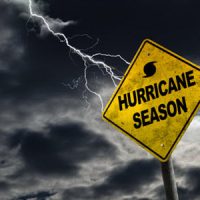Tips For Safely Evacuating Due To Inclement Weather

As Hurricane Ian continues to gather strength, authorities in Florida are urging residents to begin evacuating low-lying areas and to prepare for dangerous storm surges, flooding and damage in the coming days. Mandatory and voluntary evacuations have already been issued in Hillsborough, Pinellas, Charlotte, Collier, Hernando, Sarasota and Manatee counties, including more than 300,000 people in the Tampa Bay area as Hurricane Ian inches closer to Florida. And although all eyes are on the western part of the state, Hurricane Ian also has the potential to flood Southeast Florida due to the king tide that will occur as rain bands from the storm begin hitting the area. Depending on the storm’s path, that also means coastal areas in Palm Beach County, Broward County and Miami-Dade County may need to evacuate.
It is extremely important to have a hurricane preparedness and evacuation plan. Florida Highway Safety and Motor Vehicles (FLHSMV) offers the following advice to prepare for evacuation:
IF AN EVACUATION IS ORDERED:
- Make sure your vehicle is fueled up and well serviced before hitting the road. Fuel availability may be uncertain and what is available is likely to generate long lines.
- Have a specific destination in mind and the route planned prior to departing. Be sure to carry necessary maps as mobile phone connections and navigation may be inconsistent.
- Carry a supply of food and water for each person traveling in the vehicle.
- Withdraw money early and have sufficient cash to cover food, gas and lodging for several days. ATMs may be empty or inoperable following a storm.
- Pack a lot of patience and be prepared for delays. Do not wait to leave until a mandatory evacuation order is given. To alleviate traffic congestion, avoid the rush and depart sooner rather than later.
It is also important to remember that the roads may become more dangerous during an evacuation situation, from both weather conditions and increased stress due to traffic and situational anxiety. The CDC recommends the following tips for driving safely in a Disaster Location:
- Use your safety belt at all times.
- Drive at a speed that is safe for road and weather conditions.
- Recognize that traffic control information may not be posted because of damage to traffic signs.
- Stop lights and street signs may be missing or not working – Treat intersections where lights are out as a four-way stop.
- Recognize that police/law enforcement may be unable to enforce traffic laws.
- Be alert for trash in the road and for road damage.
- Be alert for trash falling from haul trucks and other vehicles.
- Keep space between you and other vehicles.
- Make sure to secure cargo or trash carried by your vehicle – shifting loads may fall or make the vehicle unstable.
- Avoid driving through water, especially when it is fast moving.
- As little as six inches of water may cause you to lose control of your car or truck.
- Two feet of water will carry most cars away.
- Do not drive through standing water if fallen electrical wires are in the water.
- Avoid driving when tired, fatigued, or upset.
- Do not use a cell phone while operating a vehicle.
- Avoid other distractions, such as eating, drinking, or adjusting vehicle controls, while driving.
- Plan your route in advance.
For real-time traffic and road condition reports, as well as maps and additional safety tips, the Florida Highway Patrol (FHP) encourages motorists to visit the FHP Live Traffic Crash & Road Condition Report website. Florida drivers can also call 511 on their cell phone or visit Florida 511 online for up-to-the-minute information on traffic congestion, road construction, lane closures, severe weather and travel delays on interstates and major highways.
Visit floridadisaster.org to find information on shelters, road closures, and evacuation routes.
